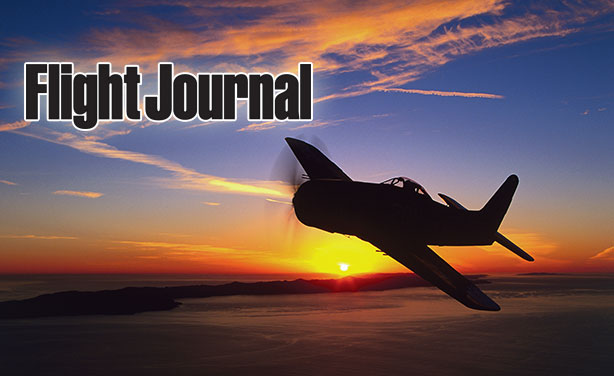GrauGeist
Generalfeldmarschall zur Luftschiff Abteilung
That's like saying this '42 Willys is representative of all 1942 Willys coupes...Rare Bear is WWII technology. It does not matter that it flew in 1989.
Follow along with the video below to see how to install our site as a web app on your home screen.
Note: This feature may not be available in some browsers.
Ad: This forum contains affiliate links to products on Amazon and eBay. More information in Terms and rules
That's like saying this '42 Willys is representative of all 1942 Willys coupes...Rare Bear is WWII technology. It does not matter that it flew in 1989.
Except for the Hunter.nothing from Hawker ever broke the sound barrier
That is a "funny car". How many actual Willys components does it have?That's like saying this '42 Willys is representative of all 1942 Willys coupes...
View attachment 654880
Rare Bear's engine was sourced from a Skyraider, and is entirely post war. The R-3350 in post war use was not the same engine that was lighting B-29's on fire in 1945Rare Bear's WWII R2800 radial engine was replaced by a WWII R3350 radial engine
The wings fold? I thought they removed the outer section?Speaking of Rare Bear, here's a few pics I took several years ago at Stead after the races, engine off!
View attachment 655267View attachment 655268
I was surprised to see that tooThe wings fold? I thought they removed the outer section?
They cut down the very usable in combat bubble canopies, to something that is barely functional at all.That is a "funny car". How many actual Willys components does it have?
Late war WWII fighters have draggy, bubble canopies that get cut down by racers. Rare Bear's WWII R2800 radial engine was replaced by a WWII R3350 radial engine. I am pretty certain that almost all of the original WWI era air frame is still there.
Rare Bear is WW2 technology without the "war" thingy, like guns and armour and range and reliability and all that stuff. When did they stop Reno racers shooting at each other? A very backward step in sport as far as I am concerned.Rare Bear is WWII technology. It does not matter that it flew in 1989.
Here is a good article about Rare Bear and some of the mods up to that point.Rare Bear's engine was sourced from a Skyraider, and is entirely post war. The R-3350 in post war use was not the same engine that was lighting B-29's on fire in 1945
Edit: Sorry, I think the original Rare Bear engine in 1968 was from a Skyraider, the current engine I believe is from a DC-7. Most the airframe is probably still F8F-2 vintage (which isn't WWII either) but with major re-work, but nothing of the power plant, cooling system, cowling, propeller is original

 www.flightjournal.com
www.flightjournal.com
A WW2 airplane was not built for maximum speed alone, it had a job to do. The British turned down suggestions to increase the speed of the Mustang MkI preferring shorter take off runs, rate of climb and max service ceiling over absolute max speed, I read somewhere recently.Here is a good article about Rare Bear and some of the mods up to that point.

Rare Bear - The wrecked F8F-2 Bearcat that became Air Racing's winningest Unlimited racer - Flight Journal
Aviation History | History of Flight | Aviation History Articles, Warbirds, Bombers, Trainers, Pilots | Rare Bear - The wrecked F8F-2 Bearcat that became Air Racing's winningest Unlimited racerwww.flightjournal.com
the wikipedia page has a pretty good overview of the transformations. Rare Bear - Wikipedia
But, this caught my eye:
Before the 2009 races, the wing root mounted oil coolers were replaced with a boil-off oil cooling system. As a result, the outer halves of both wing root inlets were closed off.[12] Sporting yet another new paint scheme,[13] Rare Bear finished second in the final race with a speed of 479.088 mph (770.8 km/h).
It's quite an interesting history. I guess we could argue that the airframe is "original" but that would be a pretty loose definition in my book.
In the picture above you can see the steam coming out of the tail-cone from the boil-off system. This would indicate the plane has just returned from a flight and is preparing to shut down.Here is a good article about Rare Bear and some of the mods up to that point.

Rare Bear - The wrecked F8F-2 Bearcat that became Air Racing's winningest Unlimited racer - Flight Journal
Aviation History | History of Flight | Aviation History Articles, Warbirds, Bombers, Trainers, Pilots | Rare Bear - The wrecked F8F-2 Bearcat that became Air Racing's winningest Unlimited racerwww.flightjournal.com
the wikipedia page has a pretty good overview of the transformations. Rare Bear - Wikipedia
But, this caught my eye:
Before the 2009 races, the wing root mounted oil coolers were replaced with a boil-off oil cooling system. As a result, the outer halves of both wing root inlets were closed off.[12] Sporting yet another new paint scheme,[13] Rare Bear finished second in the final race with a speed of 479.088 mph (770.8 km/h).
It's quite an interesting history. I guess we could argue that the airframe is "original" but that would be a pretty loose definition in my book.
Hear hear!Rare Bear is WW2 technology without the "war" thingy, like guns and armour and range and reliability and all that stuff. When did they stop Reno racers shooting at each other? A very backward step in sport as far as I am concerned.
But that would make it like a full-contact sport?When did they stop Reno racers shooting at each other? A very backward step in sport as far as I am concerned.

Agree about the low altitude performance (Stead airport is 5000' MSL, they race almost on the deck). Any kind of supercharger or turbocharger is an advantage only if it ensures rapid acceleration either off the line or down the straightaway known as "The Valley of Speed." Many if not all sport class racers are turbocharged AFAIK.Rare Bear is WWII technology. It does not matter that it flew in 1989.
A racing aircraft has the advantage that it only has to be fast at something below 10,000ft. You don't care about anything else. In a WWII Bearcat, you need performance up to at least 25,000ft. In a Mustang or Thunderbolt, it is more like up to 35,000ft, or even 40,000ft. A racing aircraft does not need a powerful supercharger, or the additional turbocharger.
I kind of agree to a point. The main draw in post war air racing were all the old warbirds (unlimiteds), which brought a level of nostalgia, but most were all based on airframes that were mass produced and then modified, as you say the "war" thingy." Although there were some custom built aircraft entered at the races in the unlimiteds over the years, IIRC none of them were all that successful. The formula racers brought a level of garage design and build as many were custom built for purpose. If you look at air racing during the 1930s, the efforts to bring in a winning design were in all classes. Today the sport and formula classes are the only pylon race classes that bring in that custom design where the aircraft has one purpose - to go around a closed course as fast as possible. I don't know how much longer WW2 airframes will be racing at Reno, but I'd like to see race aircraft built for purpose and not necessarily based on an obsolete WW2 design. My 2 cents!Rare Bear is WW2 technology without the "war" thingy, like guns and armour and range and reliability and all that stuff. When did they stop Reno racers shooting at each other? A very backward step in sport as far as I am concerned.
If I'm not mistaken I believe that system was designed by an engineer I used to work with, he was on the Rare Bear crew for many years.In the picture above you can see the steam coming out of the tail-cone from the boil-off system. This would indicate the plane has just returned from a flight and is preparing to shut down.
This is a good point, FLYBOYJ. For the past couple of years the unlimiteds have been dominated by essentially stock "plus" warbirds such as the Sea Fury Dreadnought. The talk around the race this year was that the unlimited class was becoming essentially a nostalgia vintage race. The real competition is in the sport class where the winning speed was only a few miles slower than the unlimited winner. The last great unlimited race was in 2017 IIRC between to p-51s: Strega and Voodoo.I kind of agree to a point. The main draw in post war air racing were all the old warbirds (unlimiteds), which brought a level of nostalgia, but most were all based on airframes that were mass produced and then modified, as you say the "war" thingy." Although there were some custom built aircraft entered at the races in the unlimiteds over the years, IIRC none of them were all that successful. The formula racers brought a level of garage design and build as many were custom built for purpose. If you look at air racing during the 1930s, the efforts to bring in a winning design were in all classes. Today the sport and formula classes are the only pylon race classes that bring in that custom design where the aircraft has one purpose - to go around a closed course as fast as possible. I don't know how much longer WW2 airframes will be racing at Reno, but I'd like to see race aircraft built for purpose and not necessarily based on an obsolete WW2 design. My 2 cents!